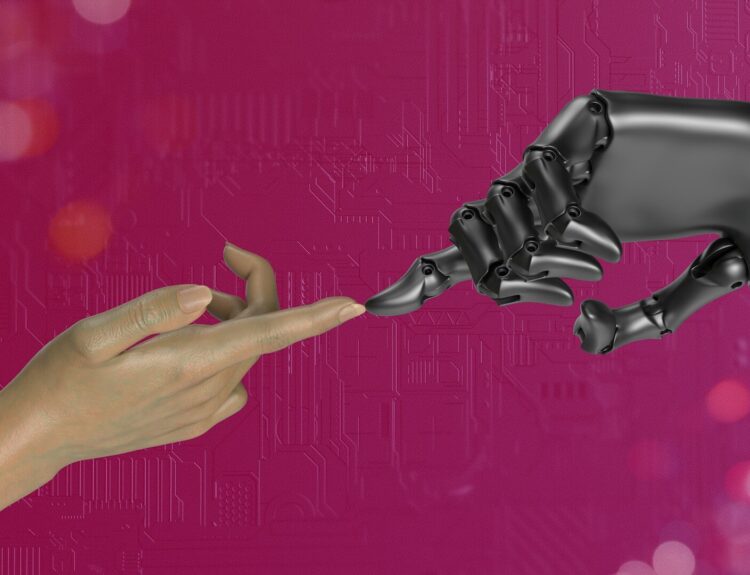In the digital age, cybersecurity is not just a buzzword it’s an absolute necessity for businesses of all sizes. With the proliferation of digital transformation, remote work, and cutting-edge technologies like AI and IoT, the cybersecurity landscape is constantly evolving, forcing professionals to stay ahead of the curve.
Cyber-attacks are becoming more sophisticated, targeting new vulnerabilities as quickly as they emerge. To help you stay abreast of the latest developments, here are some cybersecurity trends to watch in 2024 and beyond.
1. The Escalation of AI-Driven Cyber Threats
The use of artificial intelligence (AI) in cyber-attacks is on the rise, enabling threat actors to automate the identification of vulnerabilities and the launch of attacks.
AI can also be used to create more complex phishing schemes and more effective malware, making cyber-attacks harder to defend against. With the power to recognize patterns and learn from each attack, AI-powered threats are a concerning trend that cybersecurity professionals must prepare for.
Understanding Adversarial Machine Learning
Adversarial machine learning is a technique that uses AI to find and exploit weaknesses in defensive AI systems. By constantly adapting and learning from defensive responses, these models can make cyber-attacks more elusive and destructive. Businesses must invest in robust defensive AI systems and ensure that they can also adapt and learn from past incidents.
The Need for AI in Cybersecurity Defense
To counter AI-driven threats, businesses are turning to AI-powered cybersecurity tools. These tools can analyze behavior patterns, detect anomalies, and respond to threats faster than humanly possible. However, the effectiveness of these AI tools depends on the quality and diversity of the data they are trained on; thus, constant monitoring and improvement are crucial.
2. The Surge of Ransomware-as-a-Service (RaaS) Models
Ransomware attacks, in which an attacker encrypts a victim’s data and demands a ransom for its release, have grown increasingly prevalent and lucrative.
The advent of Ransomware-as-a-Service (RaaS) models has allowed even non-technical criminals to participate in this lucrative form of cybercrime. RaaS offers “turnkey” ransomware schemes to affiliates, who then carry out the attacks and share in the profits.
The Accessibility and Impact of RaaS
The “as-a-service” model has lowered the barrier to entry for ransomware attackers, enabling them to access sophisticated tools and infrastructure to carry out their attacks.
With potentially catastrophic consequences for businesses, it is critical to implement strong data backup and recovery solutions, regularly patch and update software, and educate employees on the dangers of phishing and malicious links.
Combatting Ransomware Through Preparation and Training
Preparedness is key to mitigating the risks of ransomware attacks. This includes developing a response plan, regularly testing system backups, and training employees to recognize and report potential attacks. Furthermore, organizations must ensure that they have robust security measures in place to prevent unauthorized network access.
3. The Expansion of 5G and Its Cybersecurity Implications
The roll-out of 5G technology promises faster speeds, lower latency, and greater reliability. However, the expanded use of 5G networks also carries significant cybersecurity implications.
The high-speed, low-latency nature of 5G networks makes them more enticing to cybercriminals looking to launch large-scale attacks, such as distributed denial-of-service (DDoS) attacks that overwhelm a network’s bandwidth.
Securing the 5G Ecosystem
Service providers and businesses must work together to secure the 5G ecosystem, from the infrastructure to the devices that connect to it. This includes implementing encryption, authentication, and access controls to protect data in transit and at rest. Organizations must also consider the security of the Internet of Things (IoT) devices that will be interconnected on 5G networks.
The Intersection of 5G and IoT
The combination of 5G and IoT has the potential to revolutionize industries, from manufacturing and healthcare to smart cities and transportation. However, the massive number of connected devices and the increased data flow pose security challenges.
Businesses will need to implement a comprehensive IoT security strategy that encompasses device authentication, secure update mechanisms, and network segmentation to prevent IoT-related security breaches.
4. The Imperative of Supply Chain Security
Supply chain attacks, in which a trusted vendor’s software or hardware is compromised to infiltrate a target’s network, are a growing concern. With many businesses relying on a complex network of suppliers, supply chain security is more important than ever.
Proactive Risk Assessment in the Supply Chain
Businesses must proactively assess the cybersecurity risks in their supply chain, from due diligence when onboarding new vendors to regular security audits of existing relationships. Implementing contractual obligations for security standards and incident reporting, along with security awareness training for vendor employees, can help mitigate these risks.
Collaborative Defense in the Supply Chain
The interconnected nature of supply chains means that a security breach in one vendor’s system can potentially impact those of others. To address this, businesses are beginning to adopt collaborative defense models, sharing threat intelligence and best practices with partners to strengthen the overall security of the supply chain.
5. The Evolving Role of Cybersecurity in Digital Transformation
Cybersecurity must be an integral part of any digital transformation strategy. As businesses move more of their operations and services online, the attack surface for cybercriminals grows.
Shifting Left with Cybersecurity
A “shift-left” approach to cybersecurity involves integrating security into the earliest stages of the software development lifecycle (SDLC). This ensures that security considerations are part of the design, development, and testing of digital solutions, rather than being added as an afterthought.
Embedding Security in DevOps
The DevOps methodology, which emphasizes collaboration and integration between software developers and IT operations, presents an opportunity to embed security practices. By automating security checks and implementing shared responsibility for security, organizations can ensure that their digital transformation efforts are secure from the ground up.
Wrapping Up
Cybersecurity trends such as AI-driven threats, RaaS models, 5G network expansion, supply chain security, and the integration of security into digital transformation efforts are at the forefront of discussions in 2024. The future of cybersecurity is intertwined with the future of technology, and staying informed about these trends is vital for the protection of data and assets.
As new developments emerge, organizations must remain agile and proactive, revising their strategies to keep pace with the evolving threat landscape. Remember, the best defense against cyber-attacks is a combination of robust technology, clear policies, informed employees, and a culture that prioritizes security at every level.






